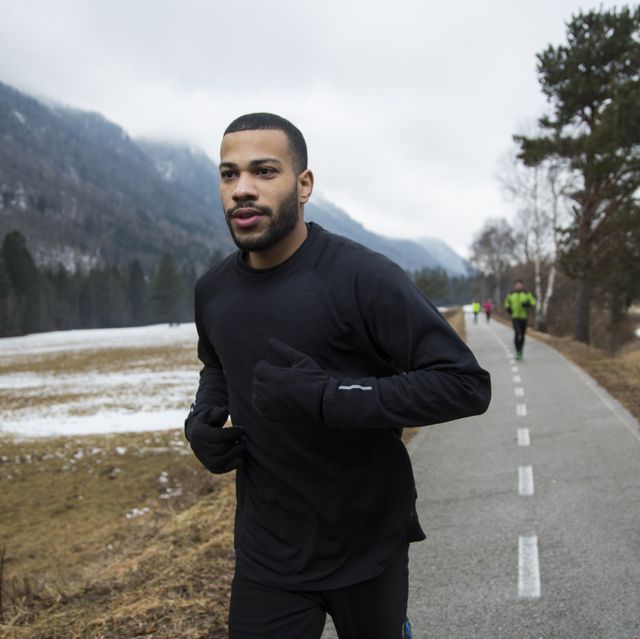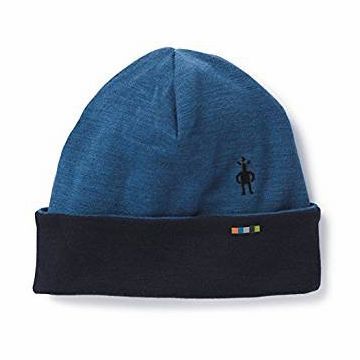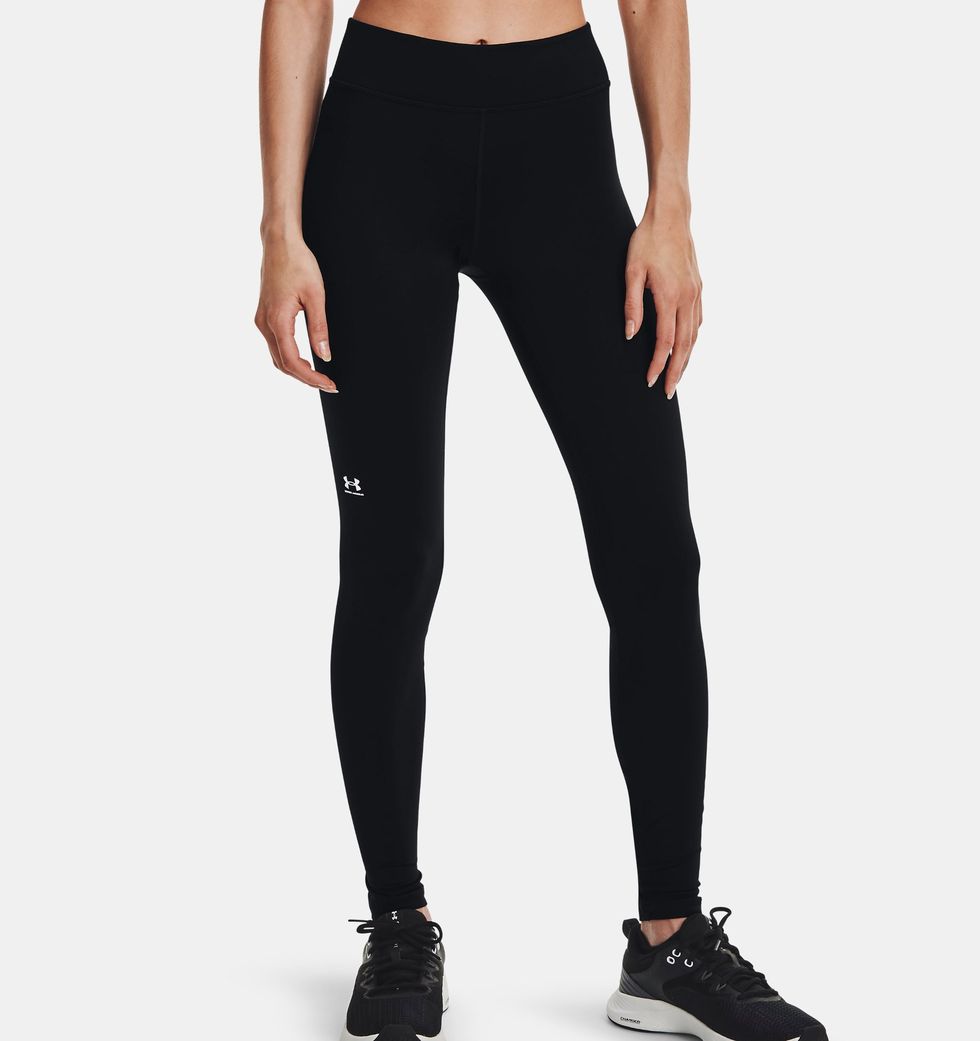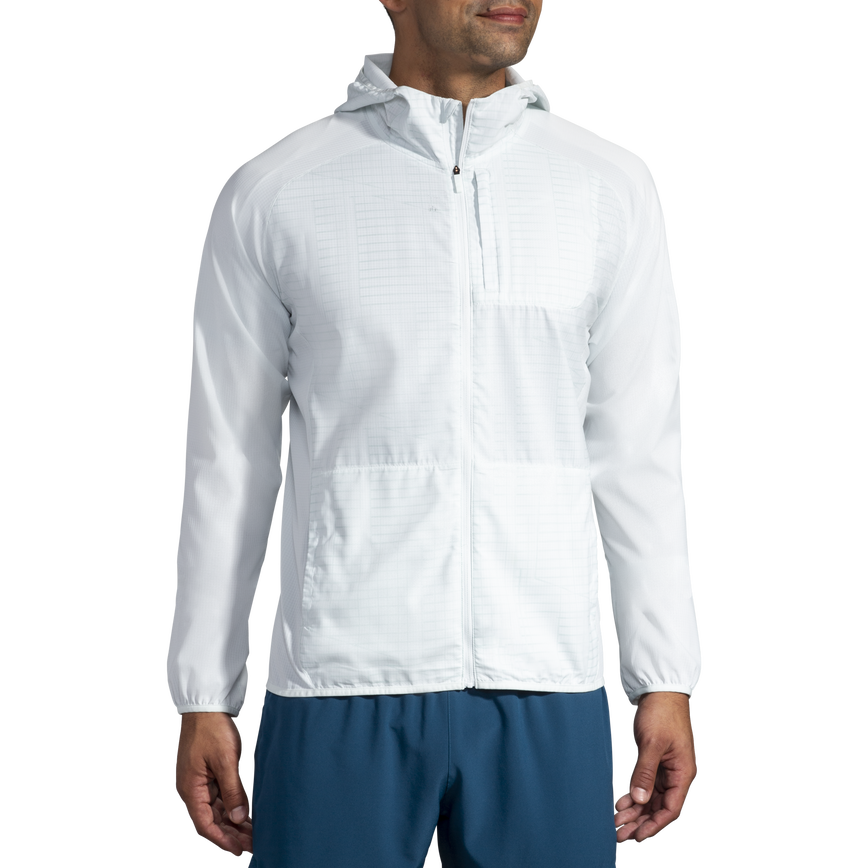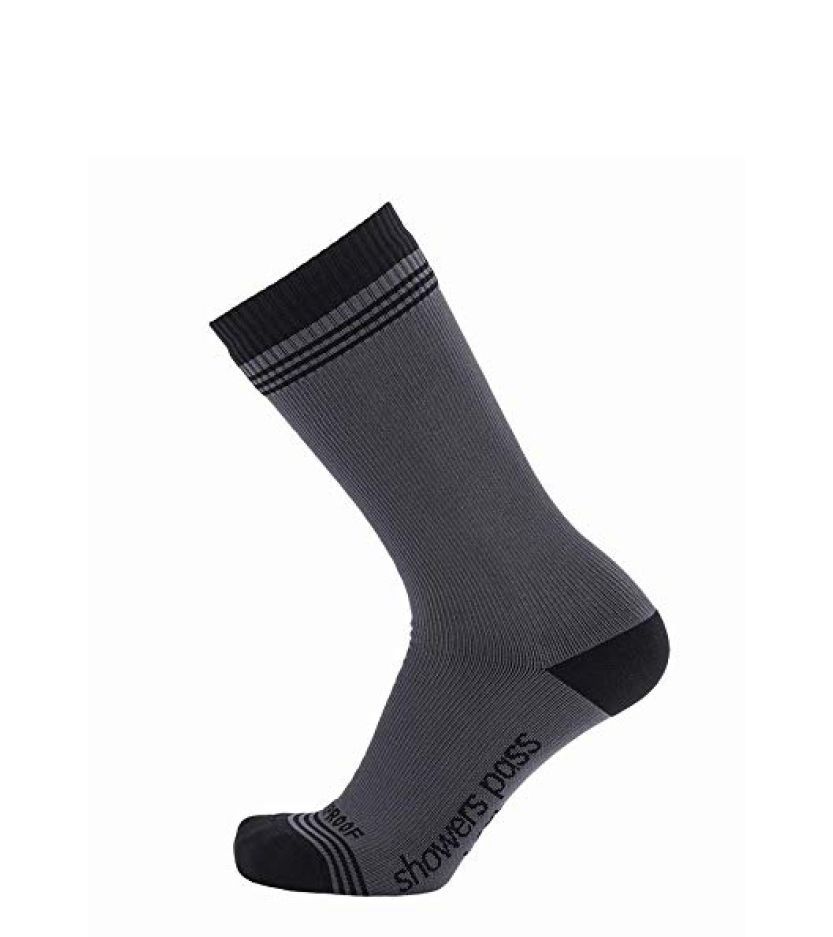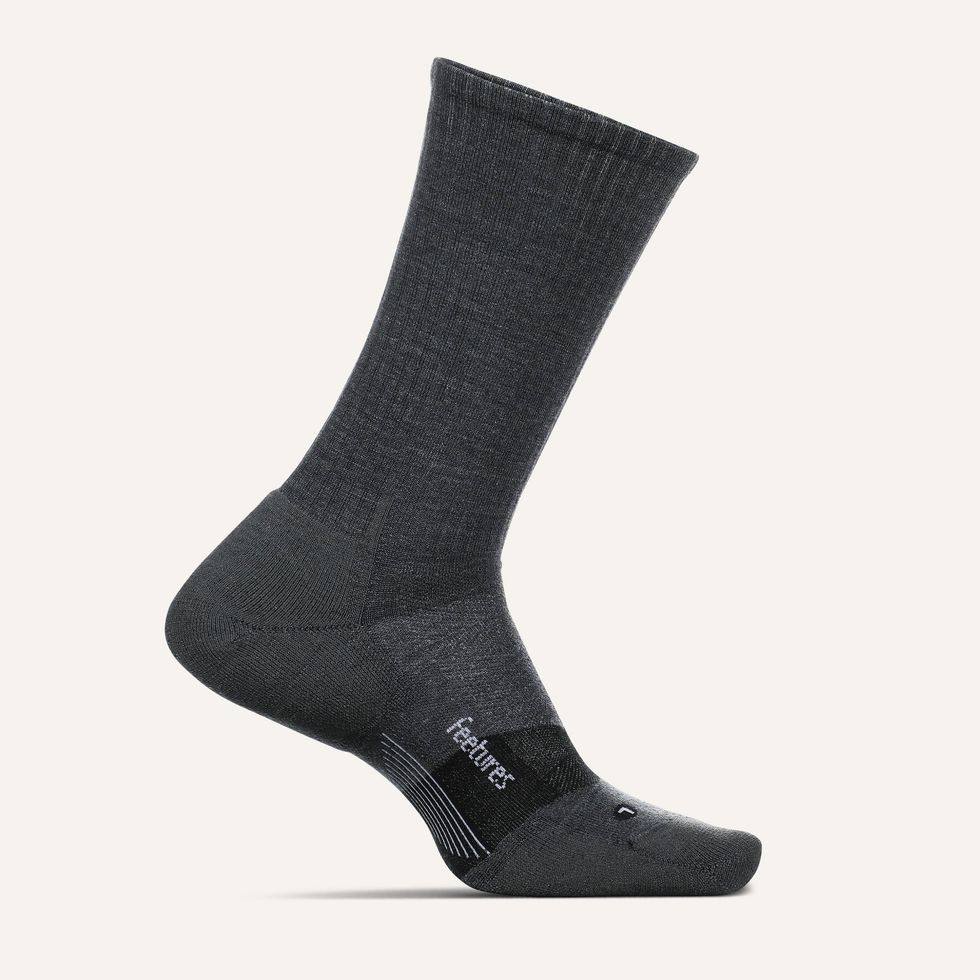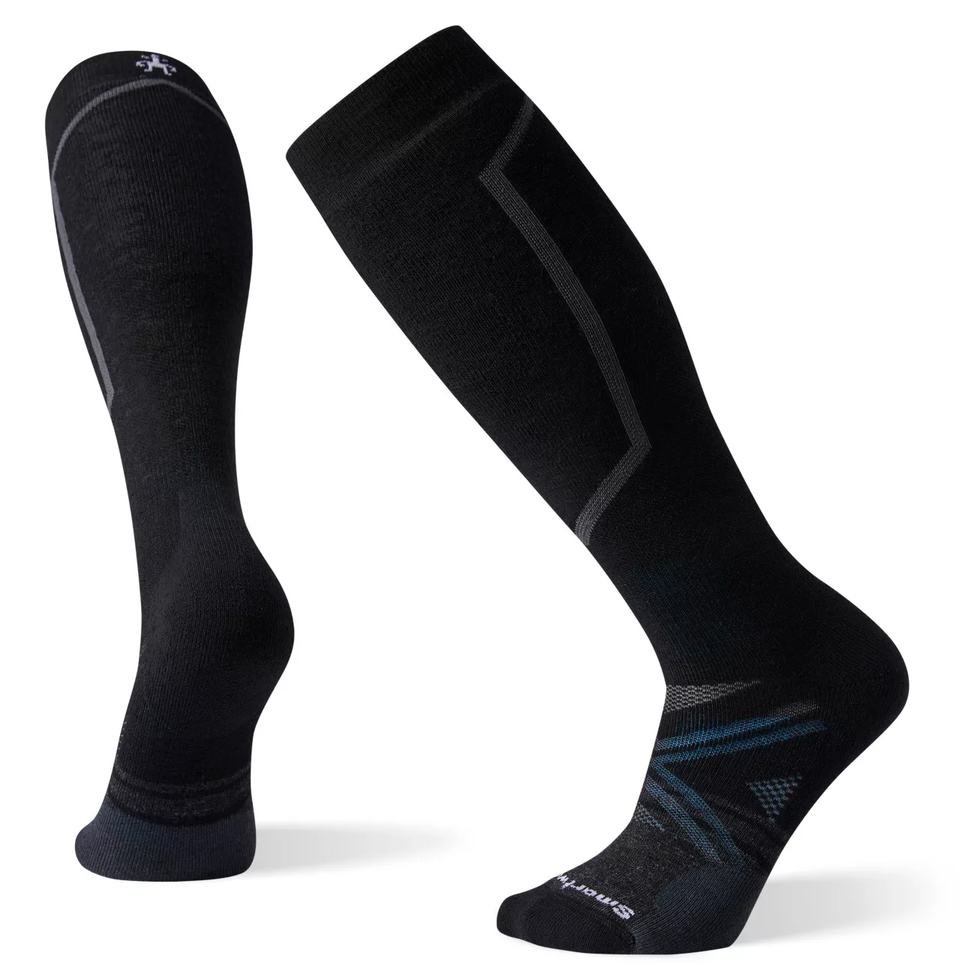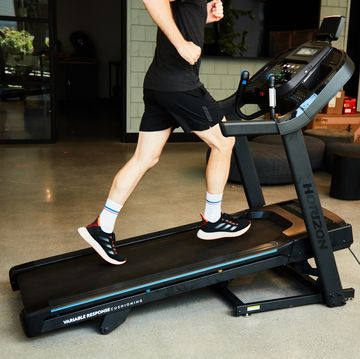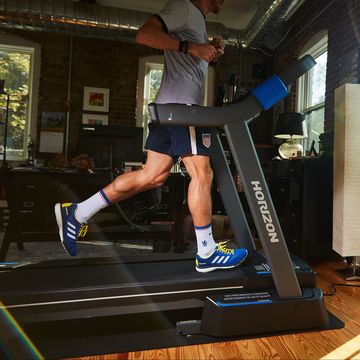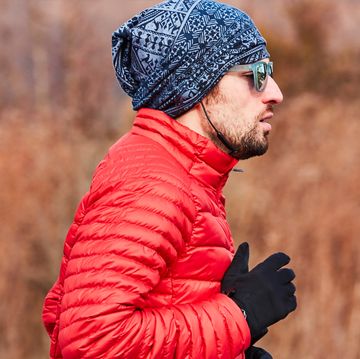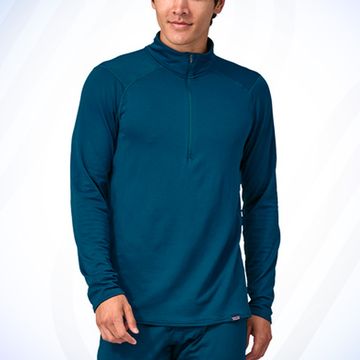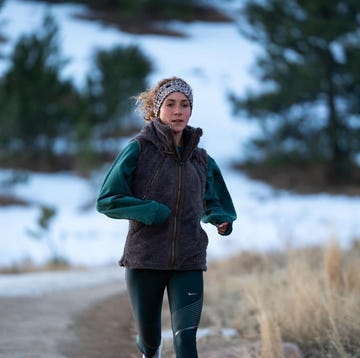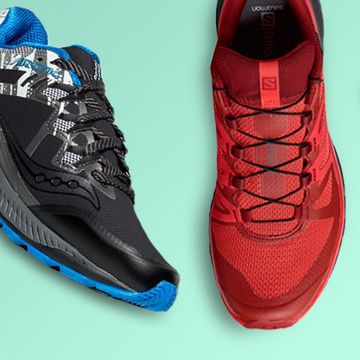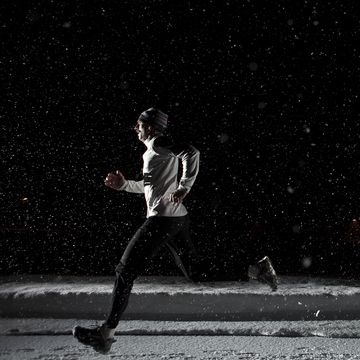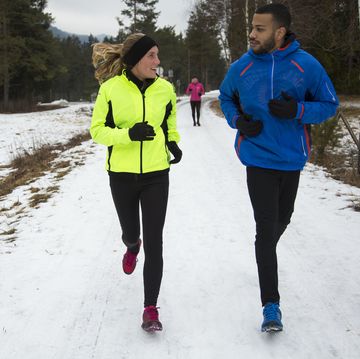As you trudge your way through winter training, you might have wondered: Is it harder to run in the cold?
You never have a problem during the temperate seasons of spring and fall. But the swamp of summer humidity always wrecks havoc on your training times. So, it makes sense that the opposite end of the spectrum would have a similar effect.
We talked to some experts to find out whether running in cold weather is as hard as you think it is. Here’s what you need to know.
What’s cold, anyway?
First, you have to understand that it’s not just about the outside temperature—it’s more about how your body temp reacts to its environment. Your body has a thermoregulatory mechanism that regulates your core temperature by increasing or decreasing heat loss and heat production within the body so you we don't overheat or get too cold, explains Joan Scrivanich, C.S.C.S., an exercise physiologist and a USAT- and USATF-certified running and triathlon coach.
So when you’re running, you’re generating heat—and even if it feels cold when you start a run, you should feel pretty OK once you’re moving. In fact, the ideal temperature for marathon running is 45 degrees, according to research published in the journal PLOS One; the study found that ideal finish times at six major marathons over 10 years ranged between 38 degrees and 49.8 degrees.
Why so cool? At around 45 degrees, “the effort to maintain core temperature is minimal, and more energy can be utilized to maintain fast paces,” says Rebekah Mayer, National Run Program Manager at Life Time. “As the temperature rises (or dips), more energy is dedicated to maintaining a safe temperature range for the body,” she adds, versus performance.
“When we exercise, the active muscles produce heat, which transfers to the core and skin,” says Scrivanich. “The more intense or the longer the workout, the more heat that is produced within the body.” Excess body heat dissipates to the environment through sweat, respiration, cardiovascular adjustments, and air movement, she adds—but cold temperatures help with the process, so you’re less likely to overheat in the long run.
“With less speed and intensity, you’ll generate less body heat,” says Steven Mayer, M.D., sports medicine physician at the Northwestern Medicine Running Medicine Clinic. “Therefore, you may tolerate higher temperatures easier.” (That’s why sprinters whose events are very short tend to perform better in warmer weather.)
Does cold weather reduce blood flow to your muscles?
When you’re running, most of your blood flow is directed to the muscles craving oxygen in your legs. But the colder it is outside, the harder your body has to work to keep your vital organs warm—then, “oxygen and blood tend to be shunted away from the extremities, which can make the muscles’ ability to use the oxygen less efficient than in more moderate temperatures,” says Mayer.
On top of that, your blood vessels constrict in the cold to maintain your core temperature, and that constriction reduces blood flow. Also, “your nerves transmit signals slower in the cold, which may lead to less efficient muscle contraction over time,” says Mayer.
But don’t freak out if the mercury dips lower than you’d like: “A cold muscle cannot perform as well as a warm muscle, but when you are running in cold conditions, your muscles are generally warm and warmed to performance level,” says William O. Roberts, M.D., a sports medicine doctor. “Cold exposure will reduce blood flow to your skin to help preserve body temperature, but circulation to muscles isn’t impacted in normal exercise circumstances.”
It’s actually more concerning when you stop moving during a run. “If you stop moving and/or if you aren’t dressed properly, your body core will start to cool, and your muscles will contract rapidly (shiver) to produce heat,” says Roberts. That contraction also reduces blood flow. But “you would have to be pretty cold (hypothermic) to reduce blood flow to the muscles, and in that situation, running performance would not be your issue,” he adds.
So, how does the cold affect your pace?
Small temperature variations from those ideal weather conditions won’t affect your pace much. But if the mercury starts dropping below 10 degrees, you probably will see a negative effect. In fact, the United Endurance Sports Coaching Academy recommends slowing your pace by 27 seconds per mile if it’s under 10 degrees outside.
That’s because, instead of focusing on running efficiency, “your body has to focus on maintaining core temp and moisturizing and warming dry and cold air before it hits your lungs,” says Mayer. “The colder temperatures cause muscles to tighten and resist efforts that would feel more fluid on warmer days, and can reduce your stride length, impacting your overall pace (especially on slippery surfaces, where your focus is on maintaining balance rather than pace).”
Otherwise, it’s not exactly the cold that’s affecting your pace, but the byproducts of that cold. “If you’re properly dressed, you’ll be wearing layers, which will create drag and added weight, both of which could slow you down,” says Roberts.
In general, you should dress for 15 to 20 degrees warmer than the actual temperature, since you’ll still generate body heat. But if it’s under 30 degrees, you should be wearing an insulated/thermal jacket and gloves, and under 25 degrees, you should be wearing a full face mask. Those layers may hold you back in terms of pace, but they’re crucial for protection (especially for your extremities).
And then there’s your actual running environment. “Winter weather conditions, like snow and ice, will require an adjustment to your pace for safety,” says Scrivanich. “Even there is no snow or ice, your footwear will be stiffer from the effects of cold on the shoe materials, which could slow you down,” says Roberts. “If there is snow and/or ice, the traction will be at its worst around the freezing mark and improve as the temperature drops, especially when it drops below zero.” Be extra careful running on snow and ice—if you have to sacrifice speed to stay upright, do it.
You also might find yourself tensing your muscles to ward off the cold, which can restrict your movements, and breathing in the cold, dry winter air can be more difficult. That general sense of discomfort in the cold can bring you down psychologically, says Mayer, which can have a very real influence on your pace.

